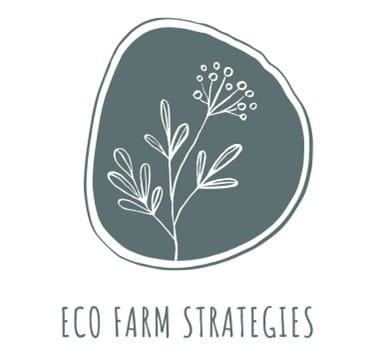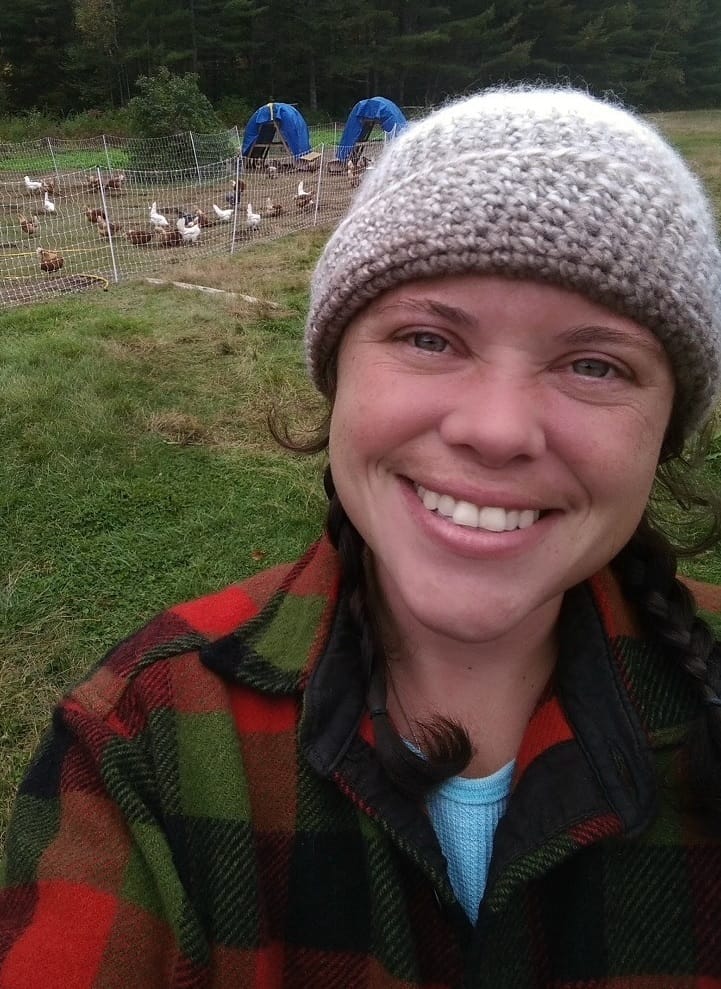- Eco-Strategies for Small Farms
- Posts
- 4 Billion Years of R&D: The Science Behind Nature's Farming Advantage
4 Billion Years of R&D: The Science Behind Nature's Farming Advantage
Eco-Farm Strategies: Issue 04


What if I told you that the most cutting-edge farming technology doesn't come from a lab—it comes from working with 4 billion years of natural evolution?
BEST LINKS
🌿 RECOMMENDED READING
Regenerative agriculture is sold as a climate solution. Can it do all it says?
Balanced journalism examining both benefits and limitations of regenerative agriculture claims.
Regenerative Agriculture—A Literature Review on the Practices and Mechanisms Used to Improve Soil Health
Comprehensive scientific review examining regenerative agriculture principles against available scientific data. Addresses farmer concerns about lack of empirical evidence.
Agroecology and Sustainable Agriculture: Conceptual Challenges and Opportunities—A Systematic Literature Review
Very recent systematic review clarifying the boundaries between agroecology and sustainable agriculture, essential for understanding core principles.
🗝️ FUNDING RESOURCE 🗝️
 | New York State is providing $2.5 million through its Urban Farms and Community Gardens Grant Program to support urban farms, school gardens, and community gardens across the state. The funding helps cover costs for food production, safety, and distribution projects to improve local food resiliency and security. |
DEEP DIVE
4 Billion Years of R&D: The Science Behind Nature's Farming Advantage
Scientific evidence overwhelmingly shows that ecological farming practices build more resilient, profitable, and sustainable agricultural systems by working WITH natural processes rather than against them.
In my own head it makes complete sense—a farm will be more productive and more profitable with a thriving ecology. Yet, humanity has become so removed from their relationship with the Earth that many of my fellow farmers have forgotten—or forsaken—that notion. They want proof before they gamble their livelihoods.
Fair enough. 🙏
Thankfully, new meta-analyses comparing thousands of farms have revealed an ecological superiority that can no longer be ignored.
Iowa State’s long-term Marsden Farm study show complex crop rotations outperform conventional single-crop practices in both yield and profitability. The Rodale Institute’s 40-year trial demonstrates organic farms use 45% less energy maintaining of exceeding yields after transition.
European research adds compelling evidence: while conventional management shows short-term stress resistance, organic systems demonstrate superior recovery after environmental challenges. This resilience becomes ever more crucial as climate volatility increases world wide.
The science is there.
Research has systematically debunked the persistent “yield gap” myth. Studies across continents demonstrate properly managed ecological systems match or exceed conventional yields while delivering superior environmental and economic outcomes.
Ecological farming isn’t about doing less—it’s about working smarter with natural systems that have been perfected over millennia.
The Four Pillars of Ecological Advantage
Pillar 1: Soil as a Living System
Last week, we discussed soil as a living system (if you missed it: check that out here) and how healthy soil contains more microorganisms in a single teaspoon than there are people on Earth. This microbial diversity drives nutrient cycling that makes plants more resilient than any synthetic fertilizer regimen. Ecological systems build soil organic matter at .5-2% annually, creating compound fertility improvements.
Carbon credit markets now pay farmers $15-50 per ton of CO2 sequestered, with ecological farms sequestering 0.5-2 tons per acre annually. Healthy soil holds 20 times its weight in water—during a 2012 drought, Rodale’s organic plots yielded 31% more than conventional plots.
Pillar 2: Nature’s Pest Control Army
Having seen the proliferation of the insect population on my own farm—the Runamuk Acres Conservation Farm—I don’t need a study to tell me that organic farms support 50% more beneficial insects than conventional farms. I’ve already created a natural predator-prey balance as we work toward eliminating the pesticide treadmill.
Ecological systems harness beneficial insects to provide free, 24/7 pest management.
Farmers report 20-30% reductions in pest control costs with decreased resistance issues. Ohio studies indicate cover crops and beneficial habitat reduce insecticide applications by 60% while still maintaining yields.
Furthermore, it was found that strategic companion planting creates ecosystem insurance that disrupts traditional pest patterns. We’ll talk more about companion planting in a future issue.
Pillar 3: Built-In Climate Resilience
Every year, it seems we are faced with a new record-setting weather event. Everything from droughts to floods, scorching hot temperatures, mega-hurricanes and more.
With the increasing threat of such extreme weather, it’s imperative we develop ecological system that are proven to be more stable and self-regulating.
Ecological systems show superior recovery from extreme weather. Cover crops and diverse planting oderate soil temperatures by 10°F, while improved organic matter increases water-holding capacity by 18,000 gallons per acre for every 1% increase.
Long-term data reveals true ecological power: while conventional systems show increasing volatility and input dependency, ecological systems become more stable and self-regulating. This translates to predictable income and reduced risk—exactly what farmers need in uncertain climate futures.
Pillar 4: Economic Sustainability
Following the transition, farmers practicing ecological methods report a 25-50% reduction in costs for fertilizer and 30-60% for pesticides as soil health improves and natural pest control is established.
Re-branding and marketing for the demand in sustainable foods allows these farms premium market access that offers 10-15% annual income growth.
What’s more, labor efficiency typically improves 20-30% through reduced tillage, simplified pest management and the elimination of synthetic application. This allows the farmers to manage more acres or focus their time on value-added enterprises.
Success Stories & Case Studies
➡️Montana's regenerative grazing operations show improved forage production and drought resilience. Iowa's diverse rotation studies show equivalent profitability to corn-soybean rotations while building soil and reducing erosion by up to 91%.
➡️California's Healthy Soils Program has supported over 1,600 projects across 170,000+ acres, sequestering an estimated 1.1 million metric tons of CO2e equivalent.
➡️According to an American Farmland Trust case study, since implementing soil health practices in 2014, Ohio corn and soybean farmer Eric Niemeyer has seen consistently higher yields—from 165 to 195 bushels for corn and from 45 to 65 bushels for soybeans—while saving $36 per acre annually on fertilizer and herbicide costs.
RECOMMENDATIONS
🪜 Your Action Step This Week:
Conduct a simple soil health assessment by doing the "jar test" (mix soil samples with water in a clear jar to see soil layers) and counting earthworms in 2-3 representative areas of your farm. This no-cost, 2-3 hour investment will give you a baseline understanding of your soil condition and naturally guide your next steps toward ecological farming practices.
🔮 WHAT’S COMING NEXT?
"Reading Your Land" Next week’s issue of Eco-Farm Strategies will focus on how to assess soil health, identify beneficial insects, recognize plant health indicators, and understand water flow patterns across their current systems. This foundational skill of truly seeing and understanding your land's existing conditions becomes the compass which guides every successful ecological farming decision you will make.
🔦 COMMUNITY SPOTLIGHT 🔦
Dr. Elaine Ingham has over four decades of experience in soil biology, and is generally recognized as the foremost expert in the field. She is the primary author of the USDA Soil Biology Primer, and founder of Soil Food Web Inc, a group dedicated to empowering ordinary people to bring healthy soils back to life.
Dr. Ingham has a B.A. in biology and chemistry from St. Olaf College, an M.S. in microbiology from Texas A&M University, and a Ph.D. in microbiology from Colorado State University. After discovering the Soil Food Web Approach (Nature's Soil Operating System) nearly four decades ago and pioneering research in the field, Dr. Elaine Ingham is recognized as the foremost soil biologist in the world. |  |
Following her revolutionary work, some 10,000 scientists have now cited Dr. Ingham's research in their own unique, peer-reviewed scientific studies and publications, and Dr. Ingham has herself published over 100 scientific papers and articles exploring soil microbiology and the complex interactions within healthy soil ecosystems.
Read more about Dr. Elaine Ingham…
THAT’S A WRAP!
Before you go: Here are 3 ways I can help…
Hire me to write for you — Since starting my journey as a lady-farmer at Runamuk Acres, I've shared both adventures and misadventures through my blog and social media, building an impressive following that I leveraged to crowdfund my way to farm ownership—an early lesson in the power of storytelling in agriculture and conservation.
The Runamuk Blog — A rich collection of articles and essays that provide fresh insights into sustainable farming, sharing real-world experiences from the field to help fellow farmers and food enthusiasts navigate their own agricultural journeys.
One-on-One Consultations — Transform your growing space into a thriving, low‑stress oasis—guided by a working farmer and conservationist who lives the homestead life every day.
See you next week!
—Sam

PS - Check out my most recent farm-update! Click Here
Feel free to send me feedback: [email protected]